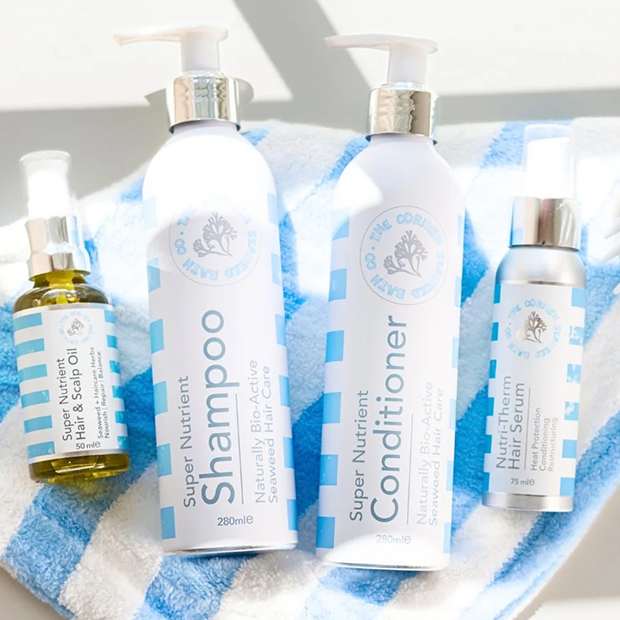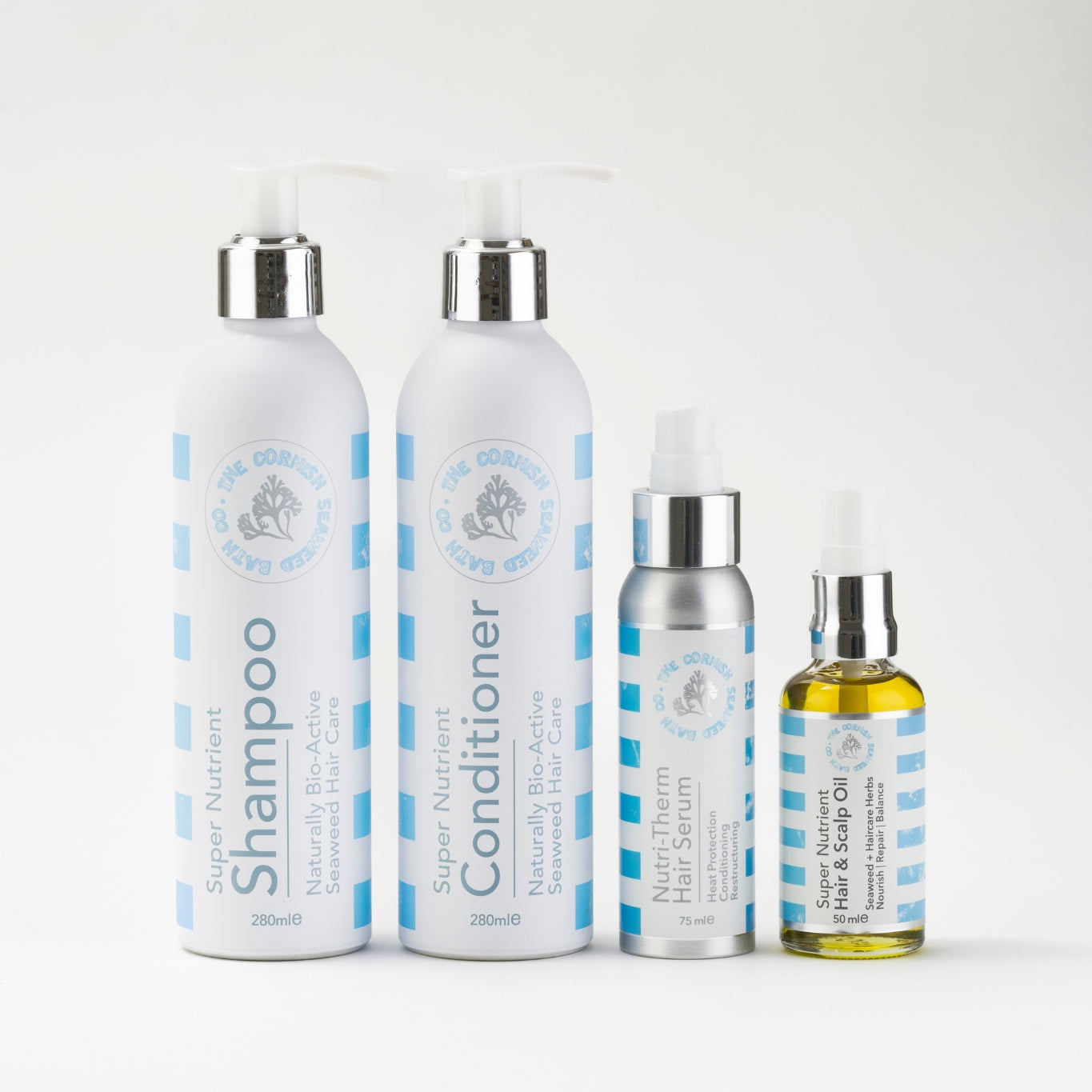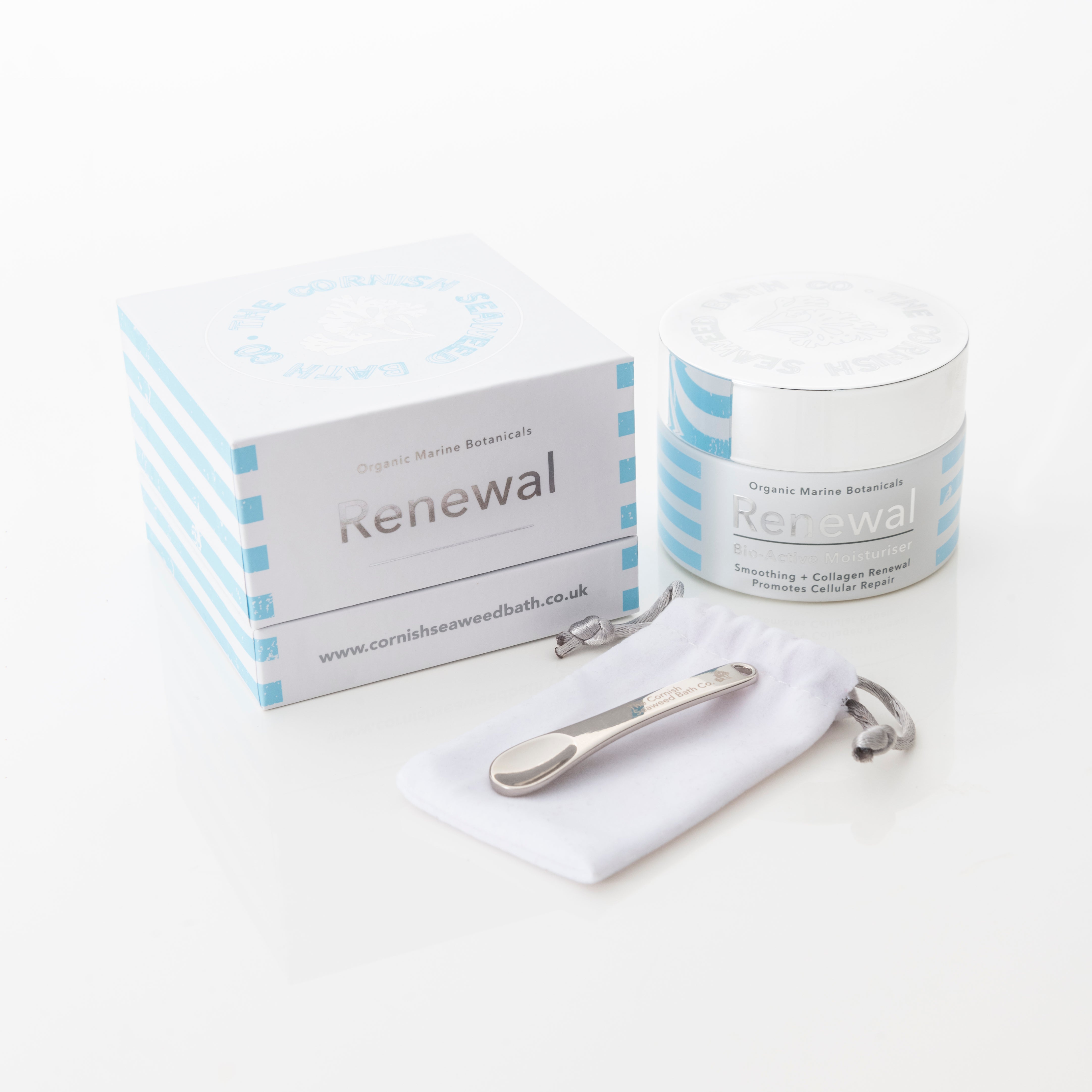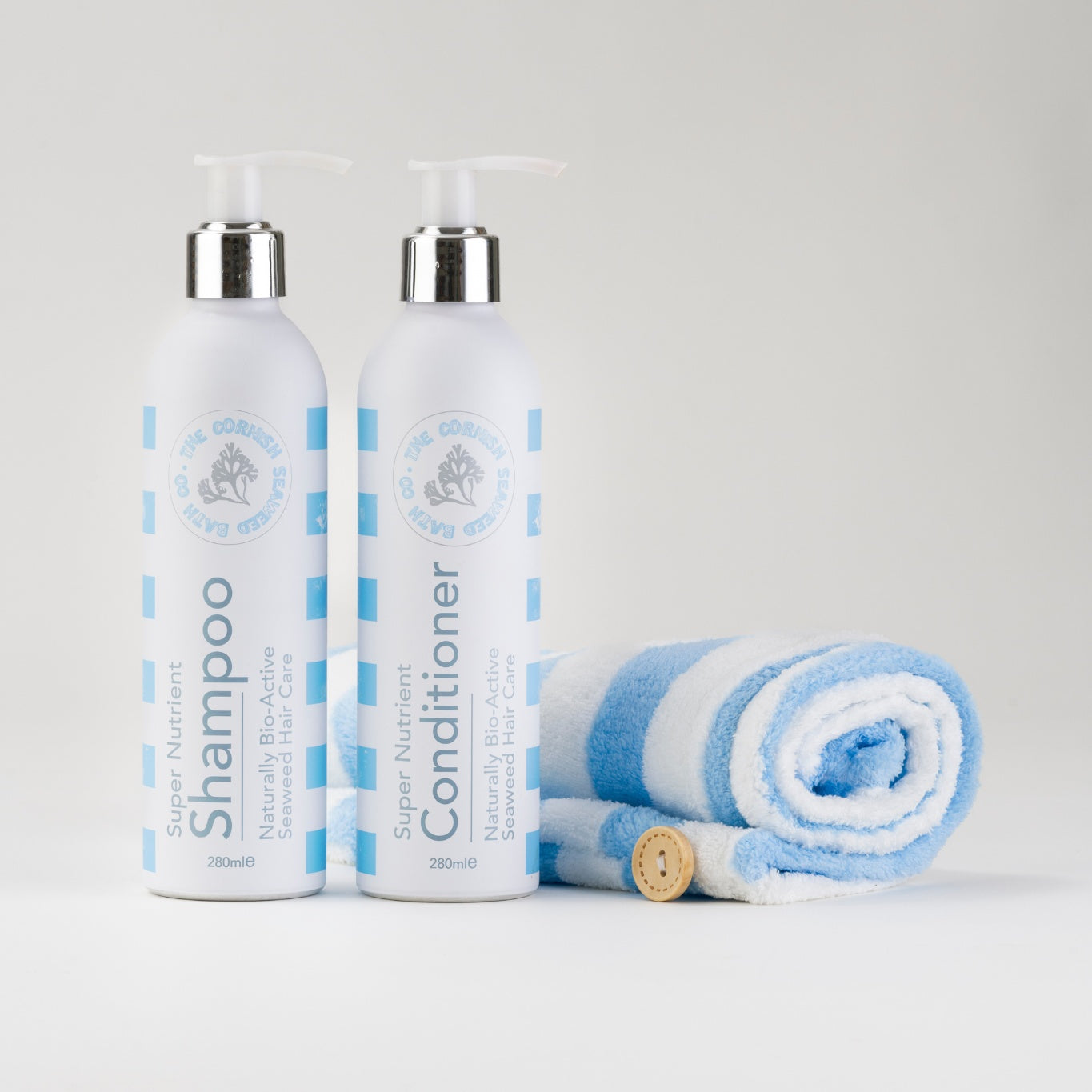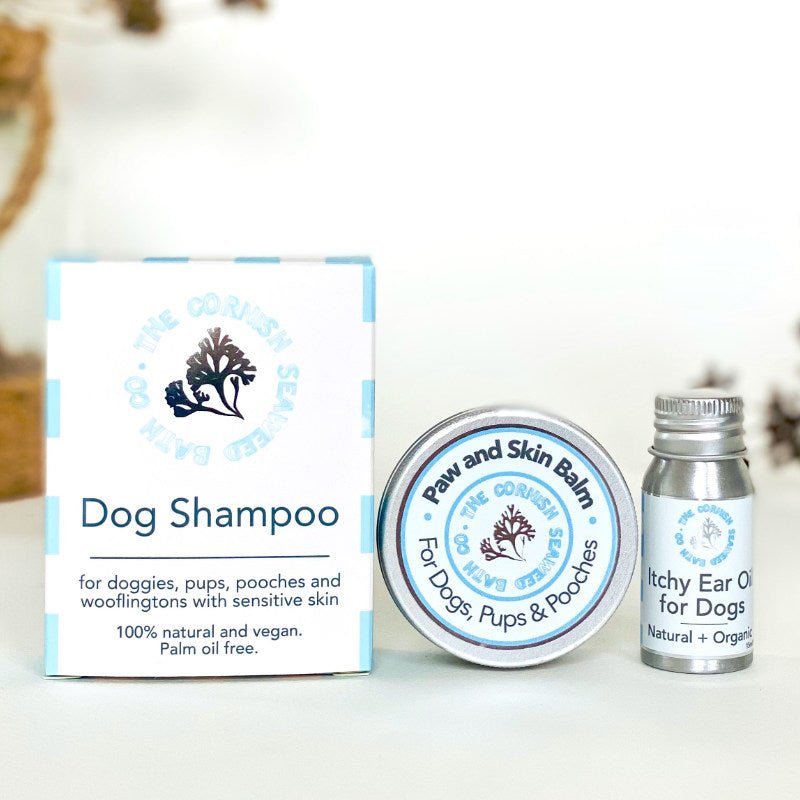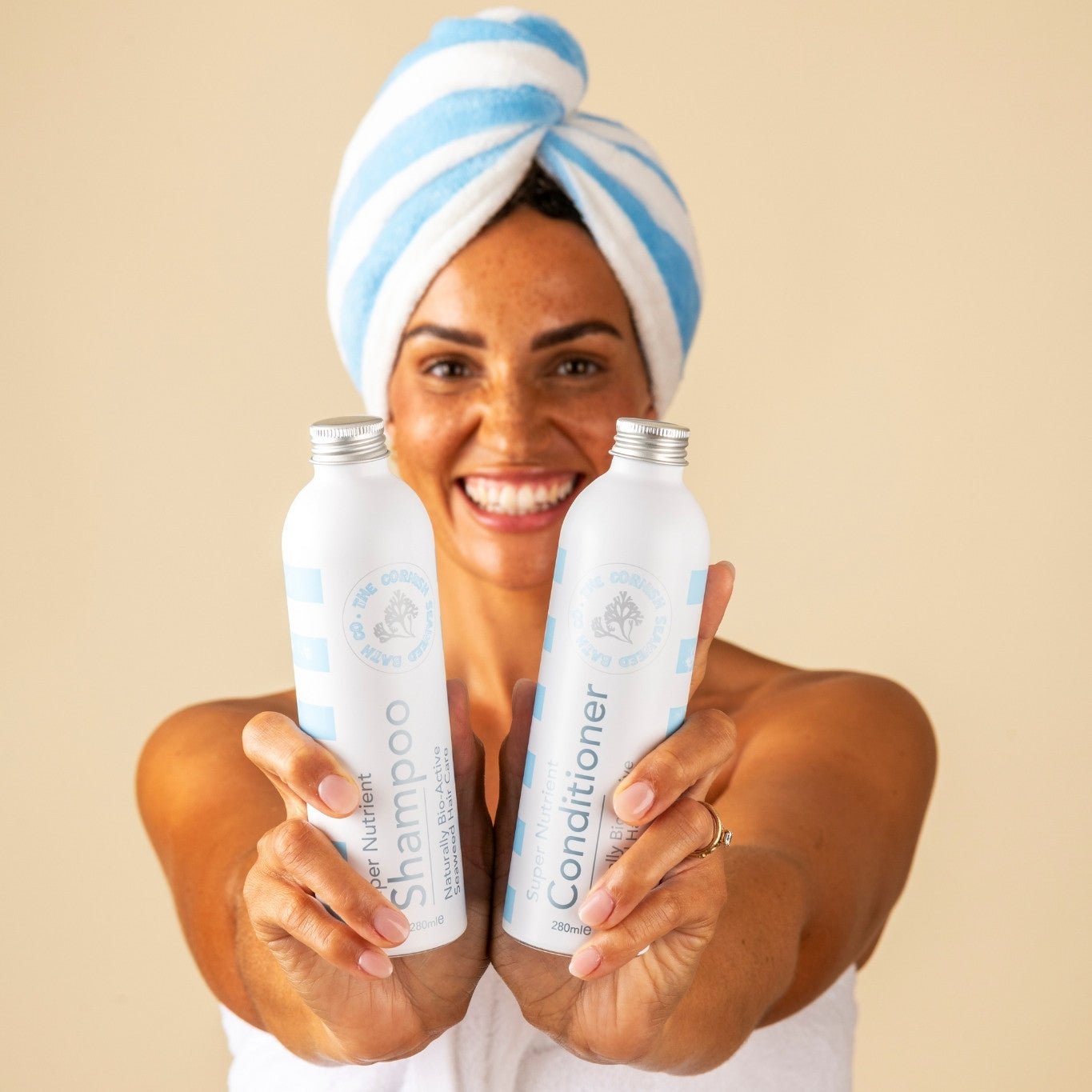Key Takeaways
- Using a drying towel with haircare products provides a gentler alternative to traditional towel drying.
- Rubbing hair vigorously with a towel can cause frizz and damage delicate strands.
- Specialised haircare products support the drying process from within the hair.
- Haircare products combined with drying towels work with your hair's natural structure.
Table of Contents
- Haircare Products With Drying Towel: Complete Guide
- How Hair Towels Preserve Your Hair's Natural Structure
- Proper Hair Towel Technique: Method Matters as Much as Material
- Pairing Your Hair Towel with Nourishing Hair Care
- Common Hair Towel Challenges
- Maintaining Your Hair Towel for Longevity and Performance
- Building Your Complete Hair Care Routine
- Making Your Informed Choice
Haircare Products With Drying Towel: Complete Guide
Stepping out of the shower with soaking wet hair, you reach for the nearest towel, only to find yourself rubbing vigorously, creating frizz and potentially damaging delicate strands. This common bathroom ritual, whilst quick, may be working against your hair's natural structure. Haircare products with drying towel combinations offer a gentler alternative, designed to work with your hair rather than against it, whilst specialised hair care products support the drying process from within.
For the best results, consider using The Hair Towel in combination with your favourite haircare products. Traditional bath towels, with their looped terry cloth construction, can snag on wet hair cuticles, causing friction and damage. Hair drying towels use smooth, tightly-woven fabrics, typically microfiber, that glide along the hair shaft rather than catching on raised cuticles. Wet hair swells as the cortex absorbs water, making strands more vulnerable to stretching and breakage.
To further enhance your routine, try incorporating The 3 Step Haircare Set for a complete approach to cleansing, conditioning, and nourishing your hair. Microfiber dominates the hair towel market for good reason. These ultra-fine synthetic fibres create dense weaves with exceptional surface area, absorbing water through capillary action rather than friction. A quality microfiber towel can hold up to seven times its weight in water, drawing moisture away from hair efficiently. Cotton hair towels offer familiarity and natural fibre appeal, though their absorbency varies significantly with thread count and weave type.
Hair towels typically come in three formats: flat wraps, turban styles with button or elastic closures, and oversized squares for plopping techniques. Turban designs stay secure whilst you complete your post-shower routine. Flat wraps offer versatility for different hair lengths and wrapping methods.
How Hair Towels Preserve Your Hair's Natural Structure
Your hair cuticle resembles overlapping roof tiles. When your hair is wet, these scales can lift slightly, especially if your hair is dry or damaged, which leaves the inner layer more exposed. Rough towel fibres catch on these raised cuticles, causing mechanical lifting and friction damage that manifests as frizz, split ends, and lost shine over time.
High-porosity hair, often the result of chemical processing, heat damage, or natural curl patterns, absorbs water readily but struggles to retain moisture. These strands benefit particularly from gentle towel drying that removes excess water without stripping beneficial moisture. You can test your hair's porosity by dropping a clean strand into a glass of water: high-porosity hair sinks quickly, whilst low-porosity hair floats on the surface.
Proper Hair Towel Technique: Method Matters as Much as Material

The way you use a hair towel influences results as much as the towel itself. Vigorous rubbing, the instinctive response to wet hair, creates friction, tangles, and cuticle damage regardless of towel quality. Rather than rubbing, gently scrunch sections of hair upward into the towel, allowing the fabric to absorb water whilst supporting natural curl formation. Hold each scrunch for 2-3 seconds before releasing and moving to the next section.
For those without curl patterns to preserve, loosely wrap hair in the towel and secure it turban-style for 5-10 minutes. This passive absorption removes initial water load without manipulation. Avoid wrapping tightly, which can create tension on the hair shaft and potentially stress follicles at the hairline.
Pairing Your Hair Towel with Nourishing Hair Care
A quality drying towel addresses the aspect of post-wash care, yet what you apply to hair before toweling significantly influences results. Our Super Nutrient Shampoo cleanses with naturally-derived, sulphate-free ingredients that remove buildup without stripping protective oils, whilst seaweed's polysaccharides support moisture retention. Following with our Super Nutrient Conditioner, which contains seaweed alongside tuber fleeceflower root and argan oil, smooths the cuticle layer, reducing friction potential during toweling.
For those needing deeper cleansing, perhaps due to hard water buildup or styling product residue, our Super Nutrient Detox Shampoo offers stronger, sulphate-free cleansing action through natural surfactants. Before washing your hair, apply our Super Nutrient Hair & Scalp Oil as a pre-wash treatment to deeply nourish and protect.The oil's blend of oat kernel, jojoba, and broccoli seed oils alongside seaweed help restore scalp balance, soften dryness, and support healthy hair growth
Once you've removed excess water, hair remains damp, the ideal canvas for styling products. Our Light Hold Hair Mousse, formulated with seaweed, bamboo, and broccoli seed oil, supports texture and hold whilst hair continues air drying. For those prioritising heat protection, our Nutri-Therm Hair Serum contains bamboo leaf and eclipta alongside seaweed, creating a thermal barrier whilst adding shine and smoothness.
Common Hair Towel Challenges

Even with proper technique and quality materials, you may encounter issues that require adjustments to your routine. Most problems stem from technique errors or product interactions rather than towel defects.
Hair Remains Excessively Wet After Toweling
If your towel seems ineffective, first check its saturation capacity, an already-damp towel cannot absorb additional water. Keep two towels in rotation, switching to a dry one midway through the process for thick or long hair.
Frizz Despite Using Microfiber
Frizz after towel drying often stems from technique rather than towel choice. Ensure you're scrunching or pressing rather than rubbing. Check your towel's age, worn microfiber develops rough patches that catch on hair. Additionally, examine your haircare routine: sulphate-heavy shampoos strip protective oils, leaving hair vulnerable to frizz regardless of drying method.
Towel Slips Off Before Hair Dries
This frustration typically indicates incorrect wrapping technique or inappropriate towel size for your hair length. For turban-style towels, ensure you're creating enough twist tension before securing the button or elastic. Some find that slightly damp-drying their hairline first, gently pressing with a small section of towel, reduces slippage by removing the heaviest water concentration.
Maintaining Your Hair Towel for Longevity and Performance
A quality hair towel represents an investment in your hair care routine, yet improper maintenance degrades its performance and shortens its lifespan. Wash hair towels every 3-4 uses to prevent bacterial growth and odour development, particularly in humid climates where towels dry slowly. Use warm (not hot) water with a small amount of gentle detergent.
Never use fabric softener, which coats microfiber filaments and dramatically reduces absorbency. The silicones and waxes in these products create a water-repellent layer that defeats the towel's purpose. Air drying preserves towel structure better than machine drying, though low heat tumble drying works if you're pressed for time. High heat degrades synthetic fibres, causing microfiber to lose its characteristic softness and absorbent properties.
Replace your hair towel when you notice diminished absorbency, rough patches in the fabric, or persistent odours despite proper washing. Microfiber typically lasts 6-12 months with regular use.. If your towel no longer feels noticeably gentler than a bath towel, it's time for replacement.
Building Your Complete Hair Care Routine
Incorporating a hairdrying towel into your overall hair care routine helps maintain hair health from cleansing through styling. The order of use matters just as much as the products themselves, and when used in the right sequence, your towel and hair care products work together for optimal results.
Step 1: Cleanse Mindfully
Begin with appropriate cleansing, our Super Nutrient Shampoo for regular maintenance or Super Nutrient Detox Shampoo when deeper cleansing is needed. The detox formula offers stronger, sulphate-free cleansing action through natural surfactants, whilst our standard shampoo provides gentle daily care with seaweed polysaccharides that support moisture retention.
Step 2: Condition and Treat
Apply our Super Nutrient Conditioner from mid-lengths through ends, where hair is oldest and most vulnerable to dryness. The conditioner's blend of seaweed, tuber fleeceflower root, and argan oil smooths the cuticle layer, reducing friction potential during toweling. Leave for 2-3 minutes, then rinse with cool water to encourage cuticle closure.
Step 3: Towel Dry with Intention
Gently squeeze excess water from lengths before reaching for your towel. Apply your chosen technique, scrunching for curls or wrapping for straight hair, and leave secured for 5-10 minutes rather than immediately styling. This passive absorption removes water load without manipulation.
Step 4: Apply Styling Products to Damp Hair
Once toweled, hair should feel damp but not dripping. Our Light Hold Hair Mousse, formulated with seaweed, bamboo, and broccoli seed oil, supports texture whilst hair continues drying. For heat styling, our Nutri-Therm Hair Serum creates a thermal barrier with bamboo leaf and eclipta alongside seaweed.
Making Your Informed Choice
The ideal hair towel depends on your hair type, lifestyle, and values rather than universal superiority of any single material.Regardless of towel choice, pairing it with appropriate hair care products amplifies benefits. Our seaweed-based formulations work synergistically with gentle drying methods, the polysaccharides in seaweed support moisture retention whilst botanical oils create protective films that reduce hygral fatigue during the drying process.
Quality haircare products with drying towel combinations represent an investment in long-term hair health rather than quick fixes. The gentleness of proper toweling, supported by nourishing formulations, creates conditions where hair can maintain its natural structure and shine over time. This approach acknowledges that healthy hair care is cumulative, small improvements in daily routine compound into significant benefits over months and years.
For further reading on the broader topic, see the Wikipedia entry on hair care.
Frequently Asked Questions
How do microfiber drying towels help reduce hair damage compared to traditional bath towels?
Microfiber drying towels use ultra-fine fibres woven tightly to absorb water through capillary action rather than friction, which helps prevent snagging and mechanical damage to the hair cuticle. Unlike traditional terry cloth towels, which can catch on raised cuticles and cause frizz or breakage, microfiber towels gently draw moisture away, preserving the hair's natural structure.
What is the proper technique for using a hair drying towel to minimize frizz and protect hair structure?
To minimise frizz, gently wrap or blot your hair with the drying towel instead of rubbing vigorously. Using a turban-style wrap or a loose twist allows the towel to absorb moisture without disturbing the hair cuticle, supporting the hair’s natural alignment and reducing the risk of damage.
Which haircare products work best when paired with drying towels to enhance hair health and drying efficiency?
Lightweight hair oils or leave-in conditioners complement drying towels well, as they nourish the hair while reducing drying time and frizz. For example, our Super Nutrient Hair & Scalp Oil or Light Hold Hair Mousse work harmoniously with drying towels to support hair health and manageability during drying.
What are the differences between microfiber and natural fibre hair towels, and how do I choose the right material for my hair type?
Microfiber towels offer superior water absorption and a smooth surface that reduces friction, making them ideal for fragile or frizz-prone hair. Natural fibre towels, such as cotton, provide a familiar texture and breathability but vary in absorbency depending on weave and thread count. Choosing between them depends on your hair’s sensitivity and personal preference for fibre feel and drying performance.
A picture tells a thousand words: out of necessity, some images in this blog post have been created using artificial intelligence models. This is to help us bring to life & more comprehensively express the written content within this post. We only using artificially generated images when we don’t have a suitable image available to us.
 Autumn Sale!
Autumn Sale!

